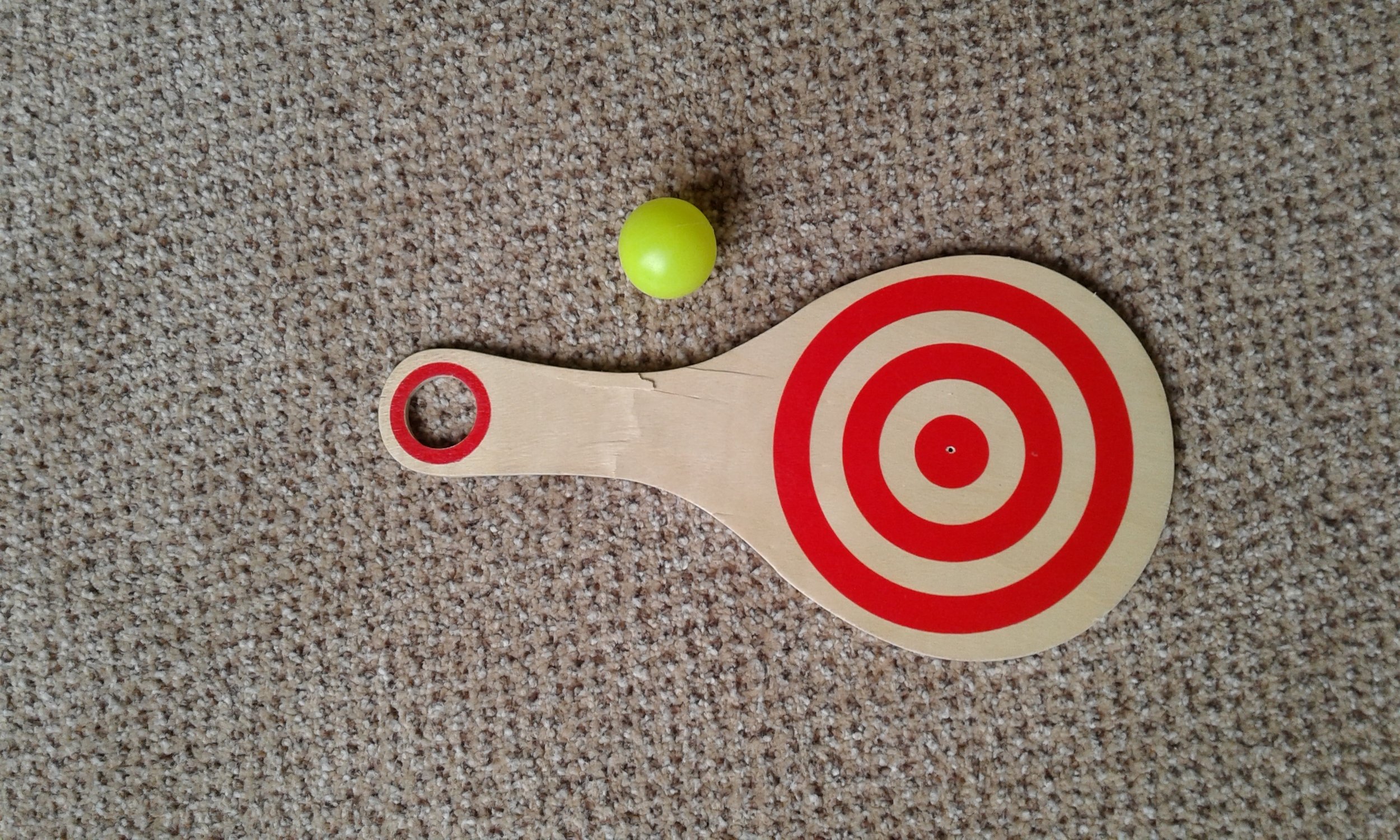Playing with balloons helped me re-discover much more slow, fluid and graceful movement. I believe that this type of controlled movement exercise could be very beneficial - even more so than playing with balls.
Read MoreTennis as Therapy for Parkinson's Disease
Tennis seems to be the perfect exercise to help PD - the hand-eye coordination, sudden quick movements, the thinking process used to execute a shot. I now play most days - mainly doubles - for up to three hours. Luckily, our club has a lot of members so there’s never a shortage of people to play with. And the strange, but rewarding part is that my game is getting better! Four years ago I would never have dreamt that I would be winning club competitions and playing matches for my club in the Leicestershire league. I started playing tennis shortly before being diagnosed in my early 50s, enjoying coaching sessions and playing a couple of times a week with my children.
Read MoreSmovey Rings and Applications For Parkinson's Disease
"Smovey Rings" are a general health and wellness tool that combine exercise and vibration, which have particular beneficial applications for Parkinson's Disease. Indeed, these hand held "rings" were invented by Johann Salzwimmer, an Austrian Tennis player and a person with Parkinson’s, who actually initially designed them specifically to help himself. So it is not hard to understand why these are proving beneficial now with many other people who also have neurological conditions.
Read MoreInsights into Parkinson's Disease
In taking us along with you on your journey you have realised that we are all different yet also all the same. It matters little what kind of music helps us, the fact is that there is some music for each of us that heals our symptoms. For me it's The Shadows music. I discovered this when I was recovering from a mini stroke and the friend came round to play his guitar for me. I could literally feel my brain responding as though I had guitar strings in my head.
Read MoreColoring and Dot-to-Dot Book Therapy for Parkinson's Disease
I immediately had a gut feeling this was likely to be one of those "ah ha!" moments, due to the following reasons:
- visual stimuli are massively important for People with Parkinson's;
- the shrinking of handwriting is a classical symptom of Parkinson's onset and we need to constantly challenge all such symptoms to keep the disease at bay;
- relaxation and escaping ingrained stress response is absolutely key to improving symptoms of Parkinson's;
- continually trying something new and challenging our brains to create new neural pathways is key to pushing the disease back and back.
Movement Recovery with Yo-Yo Stress Balls
Deb had the unique insight that a kind of stress ball (a squeezy, bouncy ball which fit the human hand well) which comes with an attached elastic string and a velcro finger or wrist strap would be hugely beneficial. She based this on our discoveries of how some hand-eye co-ordination movements are relatively easy for people with Parkinsonsim's. She was right!
Read MoreParkinson's Disease: A New Hope
In this video, I want to begin to show you what happens when we start to integrate the Out-Thinking Parkinson's strategies into new combined interventions and that, indeed, the whole quickly becomes much greater than the sum of the parts. This, then, represents the Out-Thinking Parkinson's whole. I carried on playing with these ideas for some time after making this video. And then I laughed. I laughed long, loud and deep. It was the type of laugh which hasn't left my lips in over seven years. This is why I decided to call this "A New Hope", because not even PD can withstand the power of Giggles and Glee.
Read MoreBall Game Based Therapies for Parkinson's Disease
A very simple, but extremely effective therapy for movement recovery and progressive symptom reduction in Parkinson's Disease is to incorporate playing with balls of various types, sizes and textures. The hand-eye co-ordination and sensory feedback seems to open up access to movement considerably, presumably because it brings in other pathways and regions of the brain in to help.
Read MoreBat and Ball Therapy for Parkinson's Disease
A simple bat & ball set was just about the first thing I bought when I started exploring toys which could help me unlock movement to start pushing back my Parkinson's Disease symptoms. Once I began to play with them while my PD drugs weren't working - in an "off" state in which I didn't have my much access to movement - it was a complete revelation! The shear degree of movement that suddenly came back in just playing "keep it up" with the bat and ball was a joy, especially in terms of neck movement and core rotation. The fact that while I was doing it, much of my other symptoms (rigidity, unfocused eyes, breathing problems, pain) went away, at least in the moment of play, was massive in re-thinking about my condition, and how to live well with it.
People with Parkinson's: Prove You Can Move!
Perhaps we might dismiss this as a curiosity or anomaly? I assure you it is so much more than this. Having progressed from the cotton wall to a small, bouncy ball today, I can say that for me the therapeutic value is very significant. But we've figured out if I tie something onto my finger, then I can use these ideas to reach for anything... by "web-slinging" spider-man fashion. I will demonstrate and document these latter ideas in my next video diary entry. But I am now certain the potentials for developing these ideas are large and something I believe needs urgent attention by the healthcare community.
Read More





